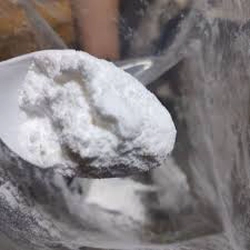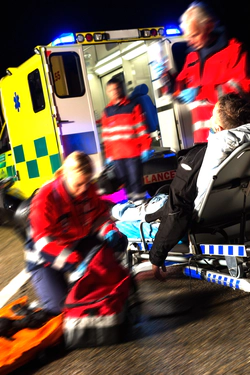‘Tranq Dope.’ A New Hybrid Drug Poses Challenges to Responders and Families of Addicts
This article reports on concerning findings out of Philadelphia, a city hit hard by an epidemic of tranq dope addiction. This article also defines what xylazine (a critical ingredient in tranq dope) is and what about the drug causes people to have overdoses that they cannot be revived from.

Every time a new drug hybrid is introduced onto the streets, deaths spike among addicts while public health officials and first responders scramble to tackle the new epidemic. Sadly, as the opioid epidemic soars while claiming tens of thousands of lives annually, it seems another drug hybrid has entered the scene. Tranq dope, a combination of xylazine and fentanyl, is causing overdoses across Philadelphia and leaving a rapidly growing number of deaths in its wake.
What is Xylazine?

The National Institute on Drug Abuse defines xylazine as a central nervous system depressant that can cause drowsiness and amnesia, slow breathing and heart rate, and lower blood pressure to dangerously low levels. The drug is a non-opioid veterinary tranquilizer meant for large animals.1
Never intended for use by humans and quite toxic to the human body, researchers believe dealers add xylazine to batches of fentanyl to create a hybrid opioid that lengthens the euphoric effects of the drug’s high. Dealers make this hybrid drug even though the concoction will kill many of their addicted customers, simply because addicts want it and dealers will get more business as a result. Reports also suggest addicts who use xylazine mixed with fentanyl also use cocaine, heroin, benzodiazepines, alcohol, gabapentin, methadone, and prescription opioids.
While the full scope of xylazine-related deaths is unknown, the situation is grim in counties, cities, and states where toxicology tests are done for xylazine in fatal overdose cases. According to NIDA, the percentage of all drug overdose deaths involving xylazine increased from 2% to 26% in Pennsylvania from 2015 to 2020. And while Pennsylvania (and mainly Philadelphia) is ground zero for the epidemic, NIDA also found that xylazine was involved in 19% of all drug overdose deaths in Maryland in 2021 and 10% in Connecticut in 2020.
What is Happening in Philadelphia?

Necrotic ulcers and inexplicable overdoses that do not respond to naloxone have hit the streets of Philadelphia. The culprit? The animal tranquilizer xylazine.
Kensington, a Philadelphia neighborhood known for being the largest open-air drug market on the East Coast, is considered ground zero of “tranq dope,” the hybrid mixture of xylazine and fentanyl. The local crisis, now growing into a national epidemic, began because xylazine is an uncontrolled substance and cheap to obtain. Dealers began by cutting the tranquilizer with strains of fentanyl 50 times stronger than heroin to create a drug that would react on a user’s body like heroin but with a more powerful and longer-lasting high.
First responders in Philadelphia became alerted of the growing problem because xylazine can leave users with unhealing necrotic ulcers, as xylazine restricts blood flow through skin tissue. First responders noticed some opioid users struggled with painful, dangerous ulcers not typically associated with opioid use. That led to further investigation and discovery that Kensington addicts weren’t just using opioids. They were using tranq dope, i.e., fentanyl mixed with xylazine.
While the Drug Enforcement Administration says xylazine has been used by addicts in the U.S. for at least a decade, mixing xylazine with fentanyl is a relatively recent development. Stephanie Klipp, a nurse who helps with local efforts to treat addicts’ wounds in Kensington, has talked to local media about emaciated users walking the streets with necrotic wounds on their legs, arms, and hands, wounds that sometimes reach the bone. Klipp has said she’s seen people “literally living with what’s left of their limbs—with what obviously should be amputated.” Klipp has also pointed out how the treatment for a tranq dope overdose is CPR and transfer to a hospital to be put on a ventilator. But responders don’t always know the addict is using tranq dope. In the precious seconds an addict has to live while overdosing, the responder may administer naloxone thinking they’re dealing with an opioid overdose, only to have the naloxone prove ineffective while the addict dies.2
The Need for Treatment for Those Addicted to Opioids and Xylazine
Critically, drug policy experts and public health officials are worried that the growing presence of xylazine in the drug supply will make it more difficult to respond to addicts who are overdosing. Quoting NIDA researchers, “Because xylazine is not an opioid, naloxone does not address the impact of xylazine on breathing. Because of this, [we] are concerned that a growing prevalence of xylazine in the illicit opioid supply may render naloxone less effective for some overdoses.” The researchers pointed out how repeated xylazine use has also been connected to skin ulcers, abscesses, and related complications. Further, there is no way to avoid a potential overdose. Addicts who use xylazine use it by injecting, snorting, swallowing, or inhaling the drug, all of which can cause an overdose.
The detailed reports coming out of Philadelphia, combined with what is already known about xylazine, are more than concerning. If a response isn’t mustered quickly, this could be the next phase of America’s devastating opioid epidemic.
If you know someone experimenting with drugs, please get them help. Even if they think they’re using drugs in a “safe” manner, skyrocketing fatal overdoses connected to hybrid drugs with chemicals in them that addicts never intended to use are evidence that no drug use is safe. Help your loved one enter a residential addiction treatment center today.
Sources Cited:
-
NIDA. “Xylazine.” National Institute on Drug Abuse, 2023. nida.nih.gov ↩︎
-
USNews. “As ‘Tranq Dope’ Arrives in a Philadelphia Neighborhood, So Do Alarming Health Challenges.” U.S. News, 2023. usnews.com ↩︎







 ®
®